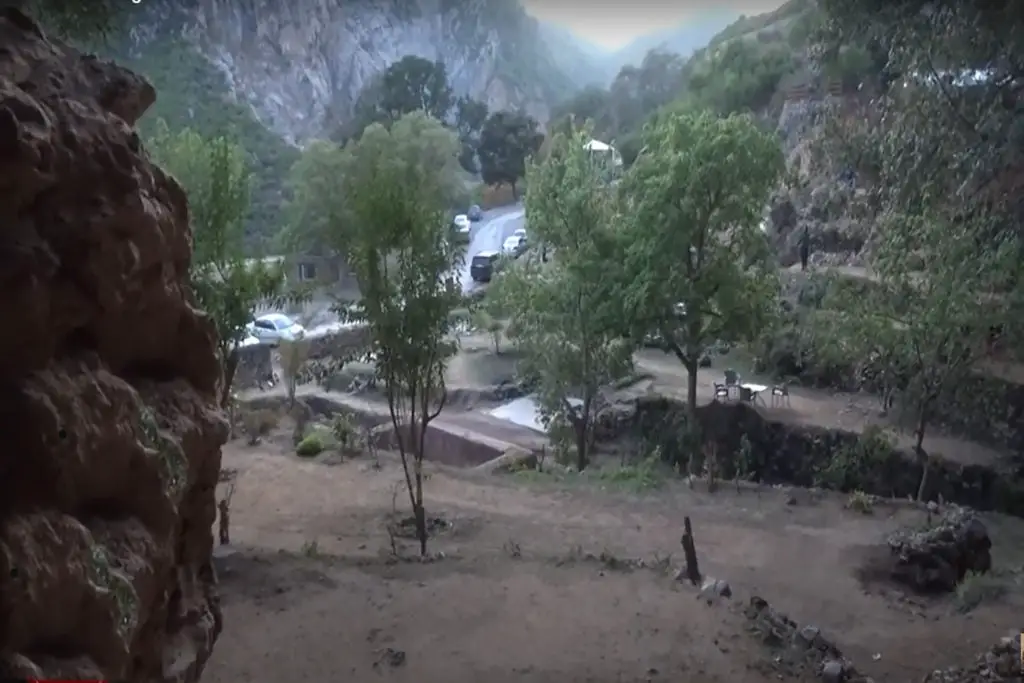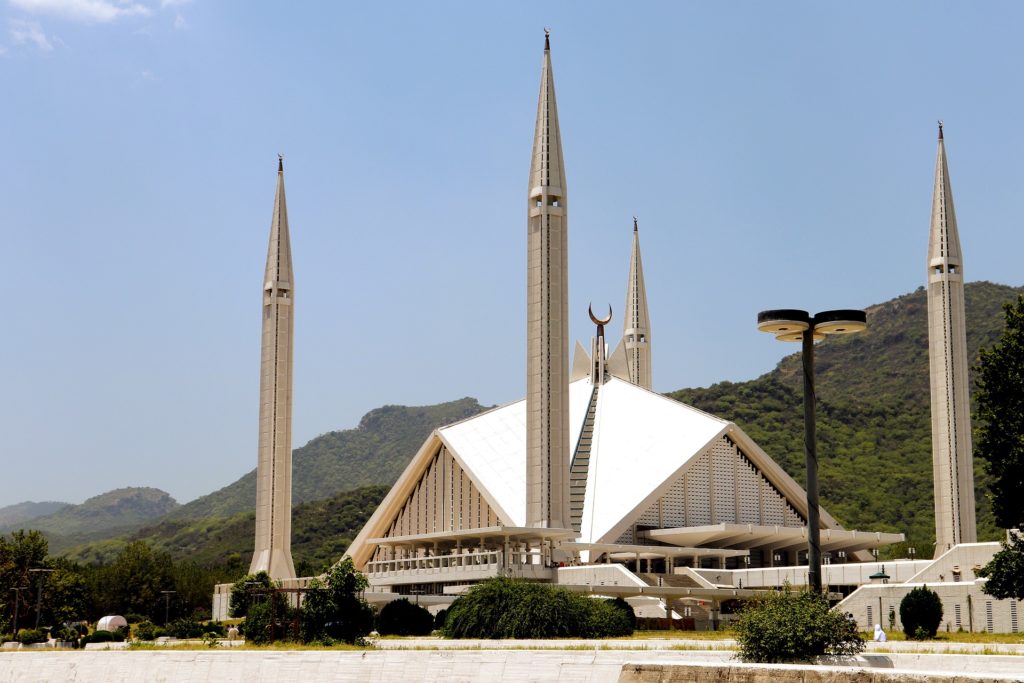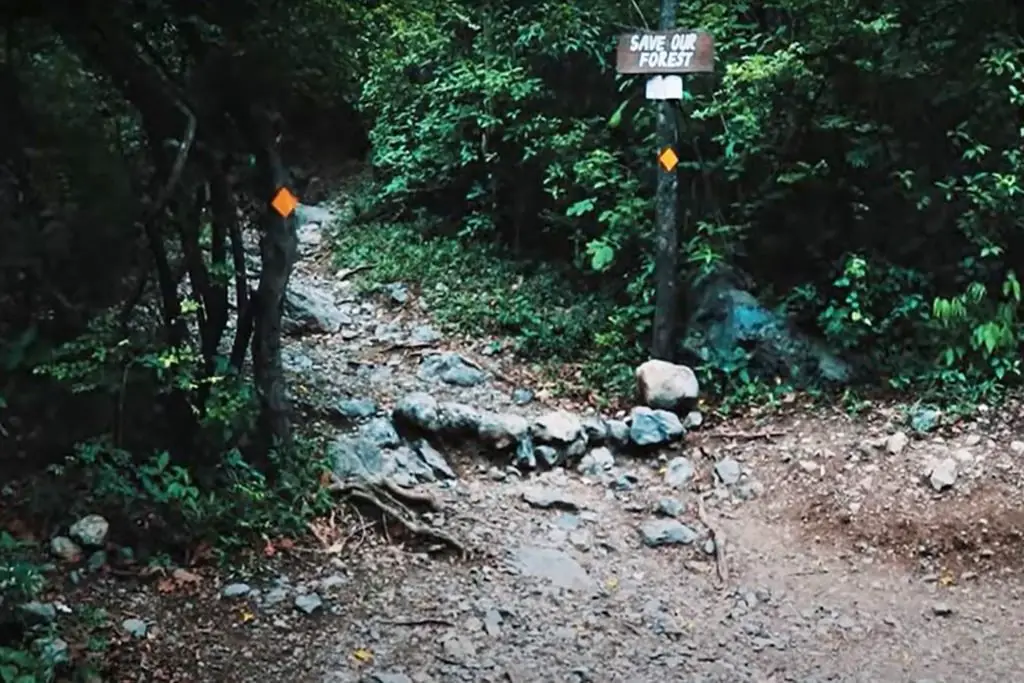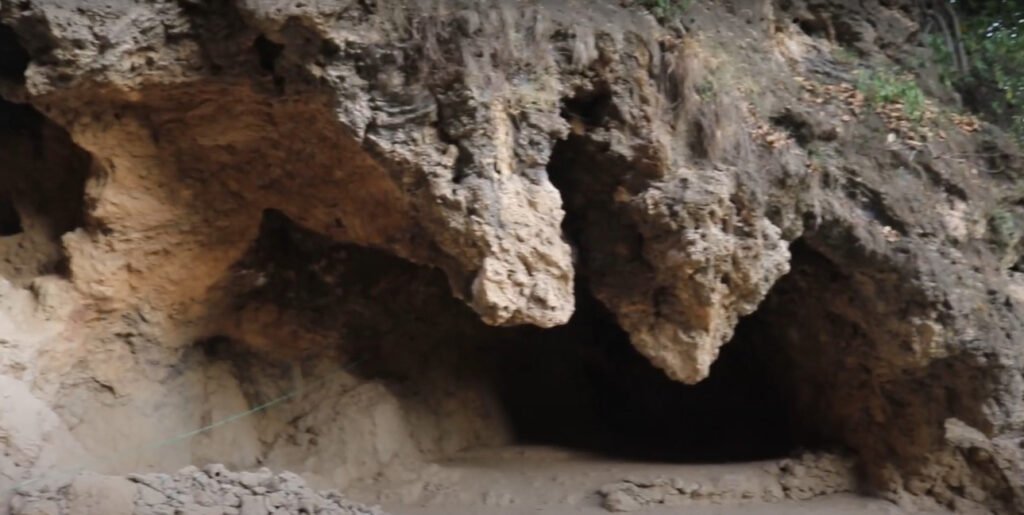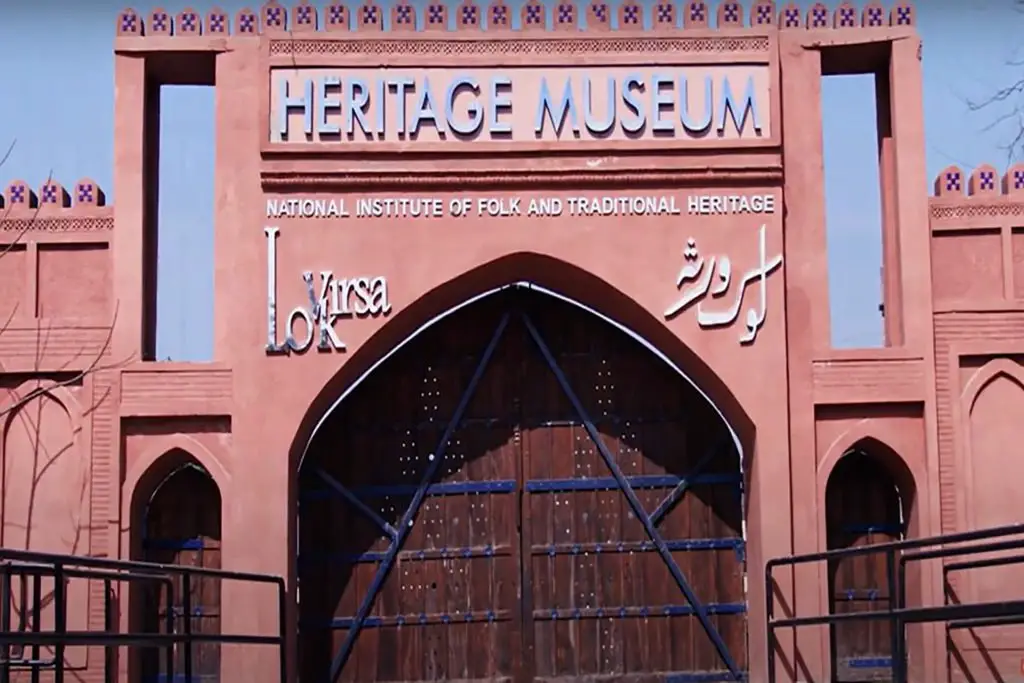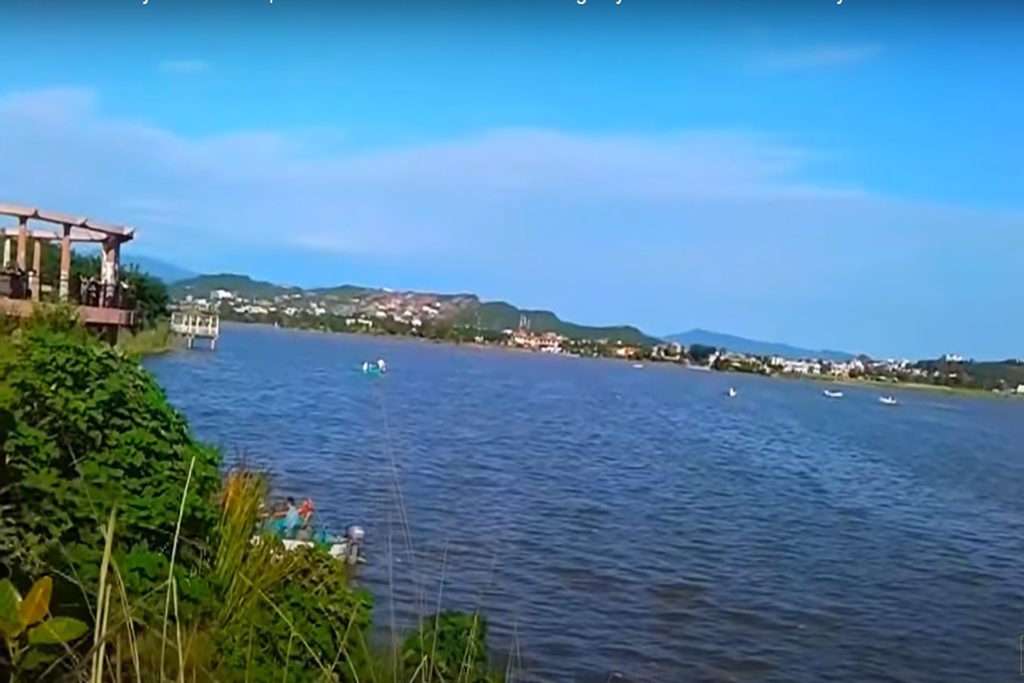Sadhu ka Bagh Caves in Islamabad is located in Sector D-12 of Capital City, Which is a garden of more than 2,400 XNUMX years below Margalla Hills in the Shah Allah Ditta valley.
Historians and nature lovers have the courage to discover what is to come: the ancient banyan trees, the ancient meditation caves of the Hindu saints, and the fountain of spring water.
It is believed that Sadhu ka Bagh caves in Islamabad are of Hindu or Buddhist origin. Some old myths suggest that it was a meditation site for Hindu Sadhus, with a garden spread across acres of land near the caves below Margallas.
The garden is located in an area where caravans used to cross hills into the Hazar region; it was considered a safe alternative among others, such as the route near Saidpur where caravans could be looted.
As per some beliefs, Lord Ram and his wife Sita and brother Lakshman of Hindu Religion arrived in Margalla Hills during their 14-year exile. It is also claimed that the Pandava brothers and their wife Draupadi crossed the Margalla Hills and reached Katas Raj during the expulsion, ”said Pakistan Hindu and Sikh Welfare Association president Jag Moham Arora.
But there are other myths about the origin of Sadhu ka Bagh. Mohammad Ismail, owner of a tea shop and a resident of Shah Allah Ditta, told Dawn that it is believed that the site was visited by Mughal emperor Humayun, who lived in a garden while crossing hills.
“Before the partition of the continent, this was the religious center of the Hindu sadhus and Hindus. Grandpa told us about the stupa and the temple on the site, but it disappeared after the Hindus migrated here. ”
The land was allotted to his family after the separation, he said, and it was always in their hands. The family looks after the Buddhist caves and the old garden, and his father still lives in the cave, he said, adding that there is a spring from the spring in the area used by nearby farms as drinking water.
The Capital Development Authority (CDA) provided land for the garden in 2011, but work has yet to be started,” he said. The road from D-12 to the valleys was also unpaved.
However, the CDA laid the groundwork and put up a poster on May 18 of that year. But with the barren landscape of the gardens and the spring, it seems that the area is still waiting for a plan to decorate it.
Abdul Azeem, director of the archeology and museum department, said: “We are working to renovate the old garden and preserve the Buddhist caves, and work on the archaeological site will be launched soon.”
A survey to identify archaeological sites in Islamabad Zone IV will be completed soon, he added, after which conservation efforts will begin in collaboration with local authorities.
The Beautiful Historic Site of Sadhu Ka Bagh Caves in Islamabad is in its original state. The flow of natural mineral water under the 1000-year-old Oak tree.
Shah Allah Ditta (Urdu: شاہ اللہ دتہ) is a centuries-old village and is a trade union federation located in the foothills of the Margalla mountains in the Islamabad Capital Territory.
The town is named after the Mughal period Dervish.
The village is believed to be more than seven hundred years old and was used as a route from Kabul to the city of Gandharan in Taxila by Alexander the Great and Sher Shah Suri while Mughal rulers and other rulers often passed through Afghanistan to Hindustan.
Remains of the Buddhist period from the 8th century can be found here as well as burnt diyas and trees with turbans tied to them.
Sadhu ka Bagh Caves in Islamabad are located on the road to Khanpur. The caves are near the temple and the tomb of Shah Allah Ditta.
2,400-year-old Buddhist paintings of Buddha appear on the walls of Sadhu ka Bagh Caves in Islamabad.
Archaeological evidence suggests that the caves and structures surrounding the site were first used by Buddhist monks and later by the Hindu sadhus before the Islamic ascetics took over the Mughal period.
Marked on the ground near the caves is the area where Alexander arrived and was welcomed by Raja Ambi, King of Taxi. The road near the caves leading to the great mountain peak, Shah Allah Ditta Road, is said to have been built in a straight line followed by Governor Pashtun Sher Shah Suri during his visit.
As you climb the mountain from the caves, there is an entrance spring called Losar Baoli and a mosque built by Shahāb-ud-Din Ghori. The mosque has cracked walls and the road to it is crumbling.
Great satellite location, you must have your ride to enjoy it. It can do ziplining and shooting close. A fun place to spend the night.
Shah Allah Ditta is a centuries-old village located on the hills of Margalla Hills, Islamabad. There are caves in an area also known as Sadhu ka Bagh caves in Islamabad. Archaeological evidence suggests that the caves and structures surrounding the site were first used by Buddhist monks and later by the Hindu sadhus before the Islamic ascetics took over the Mughal period.
The village of Shah Allah Ditta is located just behind the D-12 zone of Islamabad and you will find many old banyan trees along the way some 1300 years old. Banyan trees have spiritual significance and are abundant in Sufi shrines, Buddha monasteries, and temples.
The entire Sadhu ka Bagh caves in the Islamabad area and surrounding garden are about 2400 years old and there is a mountain stream from the mountain that supplies water to the residents near the farms. One can easily drive there, explore the area, visit caves, and have tea while enjoying the sunset.
As one wanders from Golra and inches near the hills of Margalla, crossing the newly developed D-12, history in all its glory and excitement awaits him.
The village of Shah Allah Ditta welcomes the traveler with open arms and entertains him with the news; these are the stories of foreign invaders, Buddhist monks, Hindu sadhus, and Muslim Ascetics who left their marks in the future. About 700 years ago, a Darvesh Muslim, Shah Allah Ditta, founded the village. Today, the village is a unique blend of old and young, casual and elitist way of life. One and a half miles from the 2400-year-old Buddhist caves; time, slowly and suddenly, fades into the background.
The year 326 BC. Greek troops entered India via the Khyber Pass last year. They attacked, maimed, and robbed as there was no resistance. The army marched toward the Indian subcontinent. As they cross the mighty Indus and reach the borders of Takshashila – modern-day Taxila – they face an army marching with war. It was Raja Ambi, King of Takshashila, and his army, guarding the invaders.
The Greek king was astonished, as he did not expect any opposition. To his great surprise, however, the King of Takshashila did not come to fight but to surrender and offer his support to continue the attack. The Greek King was unaware of the extraordinary love the Indus Valley people had for foreign invaders. The army of Takshashila was associated with paying tribute to the Greek King. The irony of ironies, even today the people of the Indus Valley honored the Greek King by naming their sons after him – Sikandar.
Alexander advanced on to the Punjab and was stopped by Porus in the famous battle of Hydaspes on the shores of Jhelum. Pakistani painters portray Alexander, the foreign invader, as the glorious king, and Porus, the son of the earth, as a villain in textbooks. There is no mention of Raja Ambi and his devotion to these books. The Buddhist caves of the Shah Allah Ditta valley, however, retain the marks of this devotion and remind us of the glorious King, and of his shameful devotion
Caves have seen the success and decline of men’s destinations over the long 2400 years. With the exception of Alexander, they witnessed the passing of the forces of Shahb-ud-Din Ghauri and Sher Shah Suri. The caves are home to Buddhist monks who abandoned their families in search of Nirvana. They offered refuge to the Hindu Sadhus who lived there in the Asanas separated by long hours from discovering Moksha.
They offered comfort to Muslim people who wished to have Qurb-i-Elahi. Today, one Ismail and his uncle Yaqub live in the area and run their various Dhabi yards. The place, according to Yaqub, was bought by their grandfather from a Hindu sadhu who emigrated to India during the partition. In time the family divided the inheritance but still shared the inheritance. Like India and Pakistan, they have a variety of history to tell visitors.
In front of the caves, if you follow the road, there is an airplane overlooking a half-eaten hill. The ground once was a garden full of fruit trees – called Sadhu Ka Bagh. Sadhu Ka Bagh did not exist until 1983 when the Capital Development Authority planted a stone crushing machine to cut and crush a nearby hill. Today, a partially eaten hill and a single mango tree in Sadhu Ka Bagh caves in Islamabad tell a sad story of our attitude towards nature.

